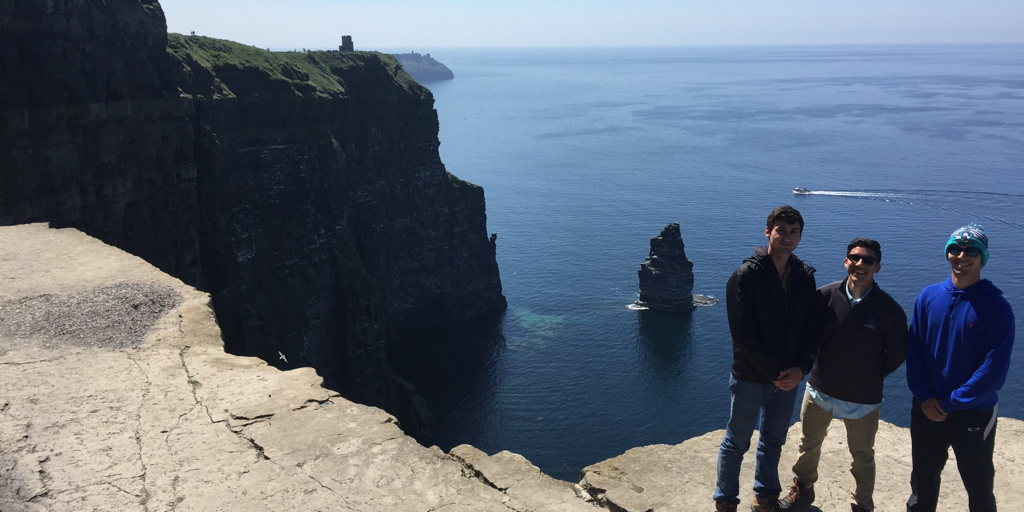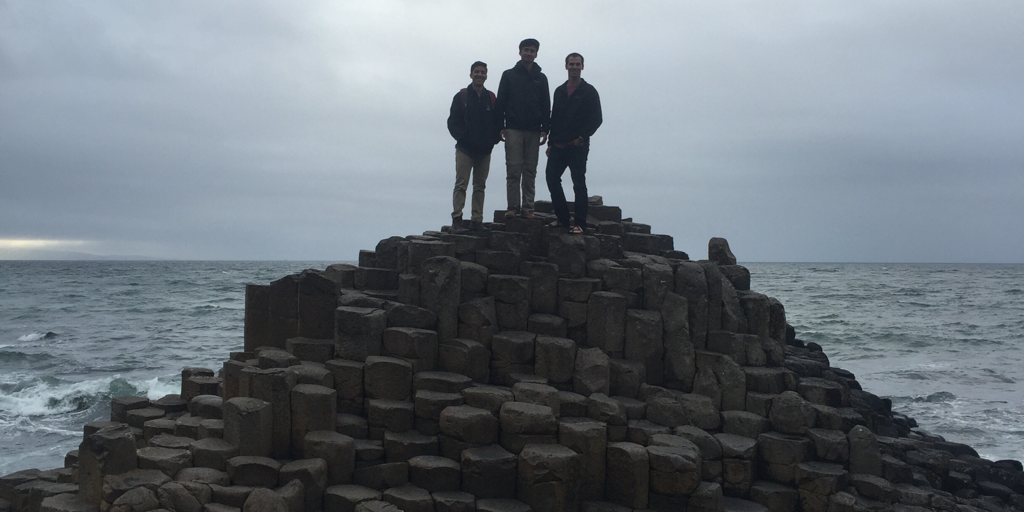
Growing up in a Catholic family, I have always been fascinated with St. Patrick of Ireland. At a young age, I heard miraculous stories of Patrick banishing snakes from Ireland and passionately evangelizing Ireland to instate Christianity. As I grew older, I became exposed to the existing Catholic-Protestant tensions in Ireland even today. My menial knowledge of the conflict, however, whetted my appetite for understanding, so I paired up with two classmates, Justin Stanley and Rafael Castro, received a generous grant from the Honors College, and embarked on an adventure to find understanding. Little did I realize that I would return with something much greater than textbook comprehension.
Ireland has a rich religious history that is generally divided into four periods: Neolithic religion, Paganism, Catholicism, and Protestantism. While each was interesting, Ireland post-Protestant Reformation captivated me most of all and taught me the paramount importance of context in all life experiences.
Through my travels, I learned that Irish religious tensions largely resulted due to English politics. Before the Protestant Reformation, the Catholic Church was not only the supreme religious authority, but also a political giant across Europe. Luther’s rebellion against Church authority inspired leaders worldwide to follow suit. King Henry VIII was the first to rule England without Catholic control, and his example foreshadowed the cruel anti-Catholic treatment that future Protestant leaders would use to crush Irish natives, who had deep Catholic roots.
In essence, conflict between the two religious groups resulted from their affiliation with certain political parties. At first glance, that was not apparent to me, but traveling to Ireland, speaking to the locals, and visiting museums helped me understand the true cause of present conditions in Ireland. However, assuming that conditions are truly how they seem at first glance often leads to a corrupted understanding.
When we visited Belfast, I was absolutely blown away by their religious history. “The Troubles,” a mob-like war between Catholics and Protestants in Northern Ireland, ended in 2007. During the peak of the war, four car bombs per day exploded throughout the city. We took a Black Taxi Tour around Belfast, and our guide explained the nature of “The Troubles” from his own account; he had several family members who were killed or incarcerated during the war. He admitted that despite the religious affiliation of the violent gangs, the war was not truly religious in nature, but political.
That evening in Belfast, rain splattered the streets, staining the concrete as the clouds continued to mourn for the families who lost loved ones during the violence. However, tension still filled the city; the wounds were still fresh. Gates swung shut at night, and “peace walls” completely segregated the two communities: Catholics on one side of the wall, Protestants on the other. Suddenly, I experienced something I never had while reading a history book: I felt the pain of the Irish people.
My time in Ireland is my favorite college memory; I traveled all around the country and saw some of the most brilliant phenomena in the world, such as the Cliffs of Moher and the Giant’s Causeway. I stood in the presence of Irish historical monuments. I grew in appreciation for the locals and people across the world. I cultivated powerful friendships with my classmates. I drank great beer. (The Guinness is better in Ireland, in case you were wondering.) Ultimately, however, I changed my perspective on traveling and learned firsthand that no textbook can adequately replace experiential learning. I am forever grateful to Honors for funding my trip. As the Irish would say, “Cheers!”
See Seth’s adventure in video here.





